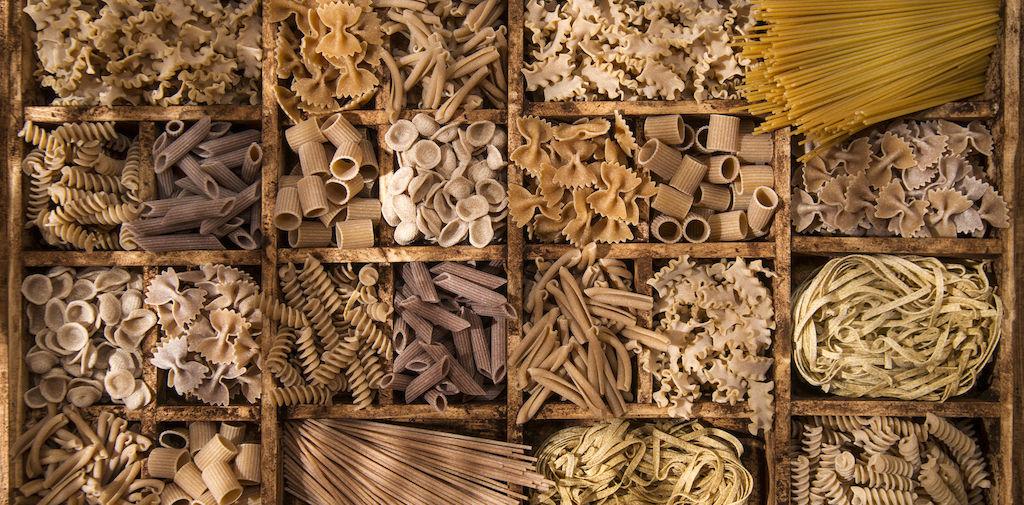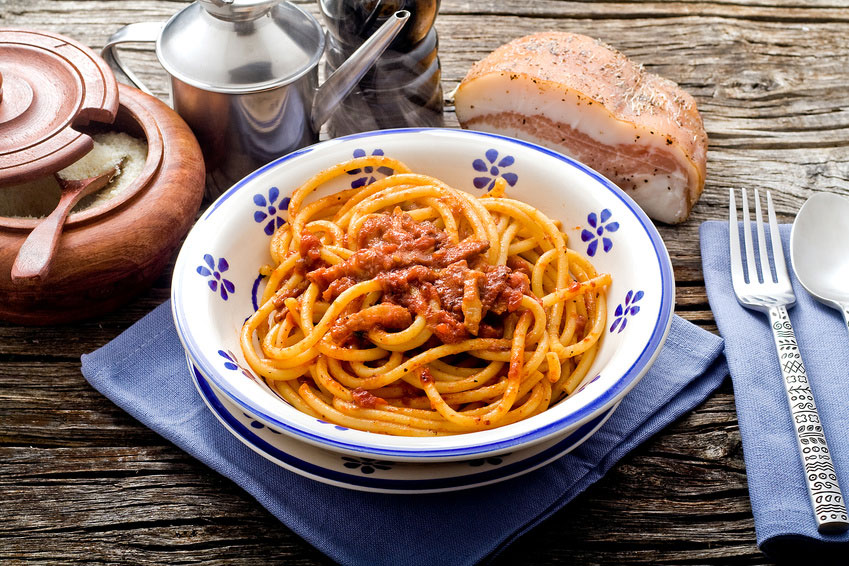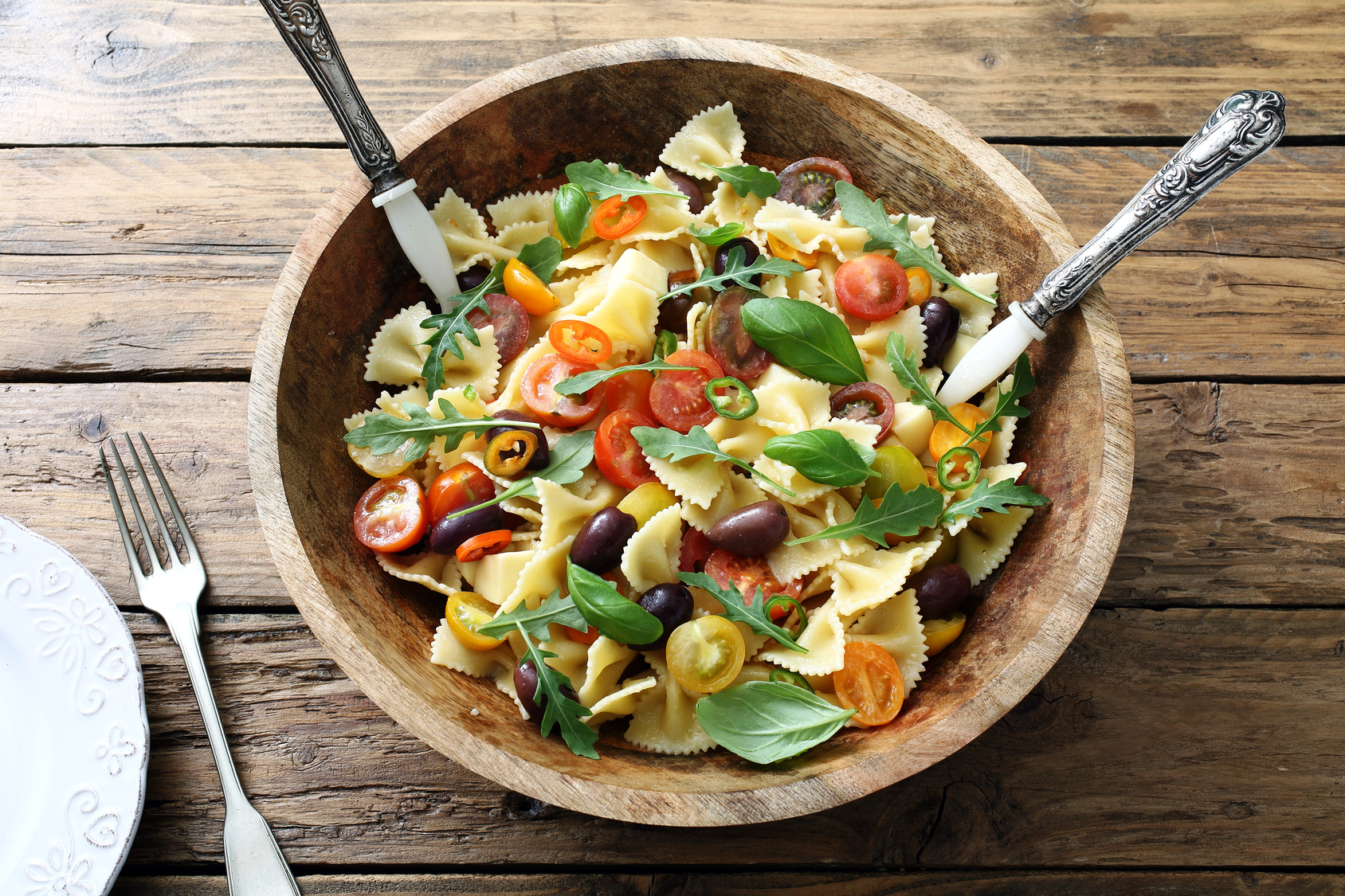Pasta is an integral part of Italy’s food history. At its most basic, pasta consists of nothing more than flour and water (and eggs, when making fresh pasta). It is a humble food that can stretch seasonal vegetables, olive oil, and small amounts of meat or cheese into a delicious, balanced meal.
With that humble ball of dough, the possibilities are endless. In fact, there are approximately 350 unique pasta shapes and nearly four times as many names for them, depending on the region of Italy where the shape originated. There are long pastas, short pastas, tiny pastas, flat pastas, tubular pastas, stuffed pastas, etc. Each pasta shape lends well with a particular type of sauce(s) in order to optimize the pasta’s ability to “hold” a sauce in the best way possible.
While there are far too many pasta shapes to discuss at one time, here are a few of our favorites:
Bucatini is a long, straw-shaped pasta that is similar to spaghetti but with a hole in the center-just wide enough to soak up juicy sauces. Although bucatini is primarily associated with Roman cooking, it most likely originated in southern Italy. Bucatini pairs well with a number of sauces, from amatriciana to Bolognese to carbonara. It’s also traditionally used in the Sicilian pasta dish known as pasta con le sarde, sardines with fennel, saffron, pine nuts and raisins.
Campanelle is a bell-shaped pasta with fluted, petal-like edges and a hollow center, just the perfect size for capturing sauce and little bits of cheese, vegetables, or meat.
Conchiglie is a seashell-shaped pasta. Its concave, shell-like shape makes it ideal for holding sauces, anything from tomato to cheese to pesto.
Cavatelli is a typical pasta shape from the Puglia region, though it can be found throughout Southern Italy. They look like miniature hotdog buns, with an elongated shape and hollow center. The word cavatelli literally translates to “little hollows.” Sometimes, they are smooth and sometimes they have ridges, the latter when rolled over a wooden board as one would do to form gnocchi. Some versions of cavatelli include ricotta, which results in a more tender pasta.
Farfalle hails from the regions of Emilia-Romagna and Lombardia, and is best known as bowtie pasta. This all-purpose shape is named for fluttering butterflies. Farfalle pairs well with light sauces and is often used in pasta salads.
Fregola, a Sardinian specialty, is a grain-like pasta with a chewy bite. These tiny semolina balls are toasted in the oven before being boiled, which gives them a nutty flavor and golden-brown hue. Fregola makes for a nice addition to soups and stews or to being simmered in a tomato-based sauce with shellfish (e.g., clams, mussels).
Orechiette originates from the Puglia region of Southern Italy. These “little ears” are popular for their soft, rounded shape that adapts easily to any number of sauces. A traditional preparation is orechiette with broccoli rabe (rapini), anchovies, chile, and garlic.
Paccheri, smooth, thumb-sized, large tubes have their origin in Naples. They are suited for tossing in tomato-based sauces, but can also be stuffed, for instance with ricotta and then layered with sauce and Parmesan and baked in the oven.
Trofie, which comes from Liguria in Northern Italy, is a small, twisted pasta, traditionally served with pesto, green beans and potatoes.
Spaghetti alla chitarra is a type of pasta from the Abruzzo region of Italy. Spaghetti alla chitarra or “guitar spaghetti,” aptly named as it is made using a large, rectangular wooden frame (known as a chitarra) with numerous thin wires stretched across it. A chitarra resembles the neck of a guitar and sounds like a stringed instrument when the pasta is rolled through it.
Strozzapreti from Emilia Romagna, Northern Italy, is formed by tightly coiling flat strips of pasta. The origin of its name (“priest stranglers”) is unknown. Some say that strozzapreti was created with the hope that gluttonous, greedy priests from the Catholic Church, which previously owned a great deal of land in Emilia Romagna, would choke on them. It’s a versatile pasta that pairs well with vegetable-based sauces to meat-based sauces.
This week and next are the perfect times to experience a few different pasta shapes, after all, October is National Pasta Month, and October 25th is World Pasta Day. At Oldways, we celebrate both the joy of pasta and its healthfulness. In fact, many people are surprised to learn that both whole grain pastas and white pastas are complex carbohydrates that have a more gentle impact on your blood sugar. For more on pasta’s healthy place on the plate or in a bowl, check out the Healthy Pasta Meal Scientific Consensus Statement, and “The Truth About Pasta” Newsletter series and Ted Ed series.
Viva la pasta, no matter the shape!
Want biweekly Med Diet information and recipes in your Inbox? Sign up for our Fresh Fridays newsletter by clicking the Subscribe button at the bottom of this page!
Join the Make Every Day Mediterranean Club Facebook group for additional information and support.








